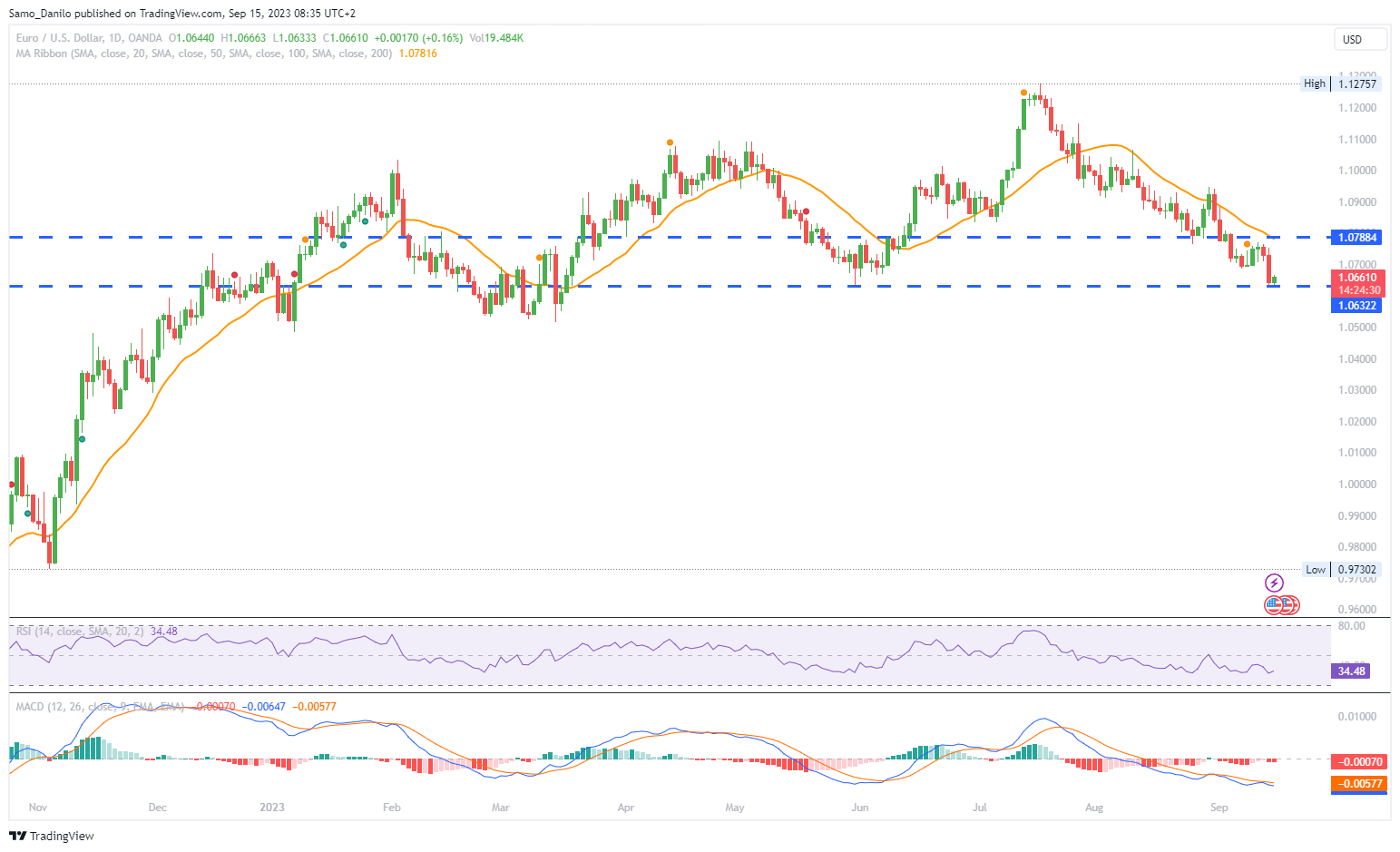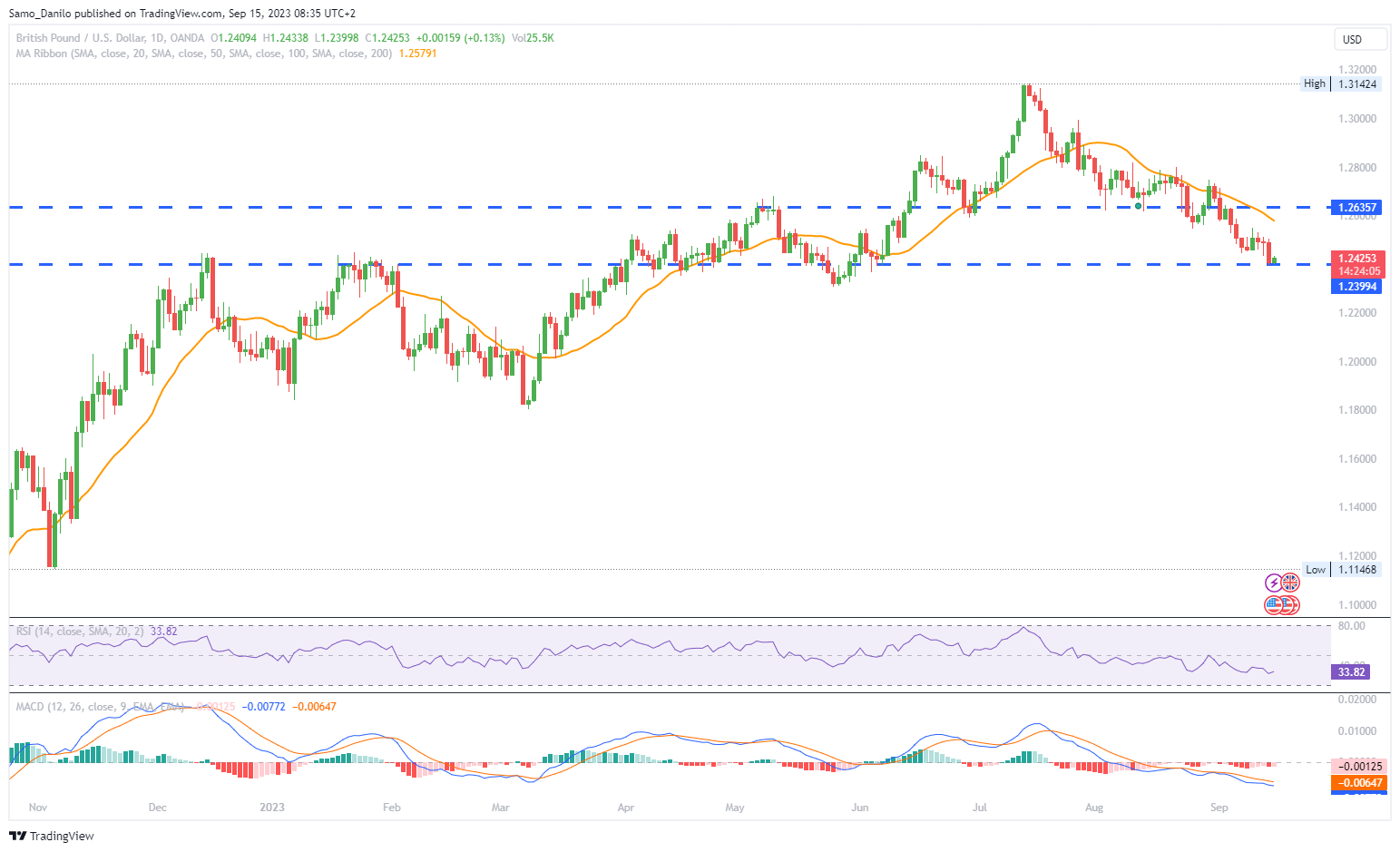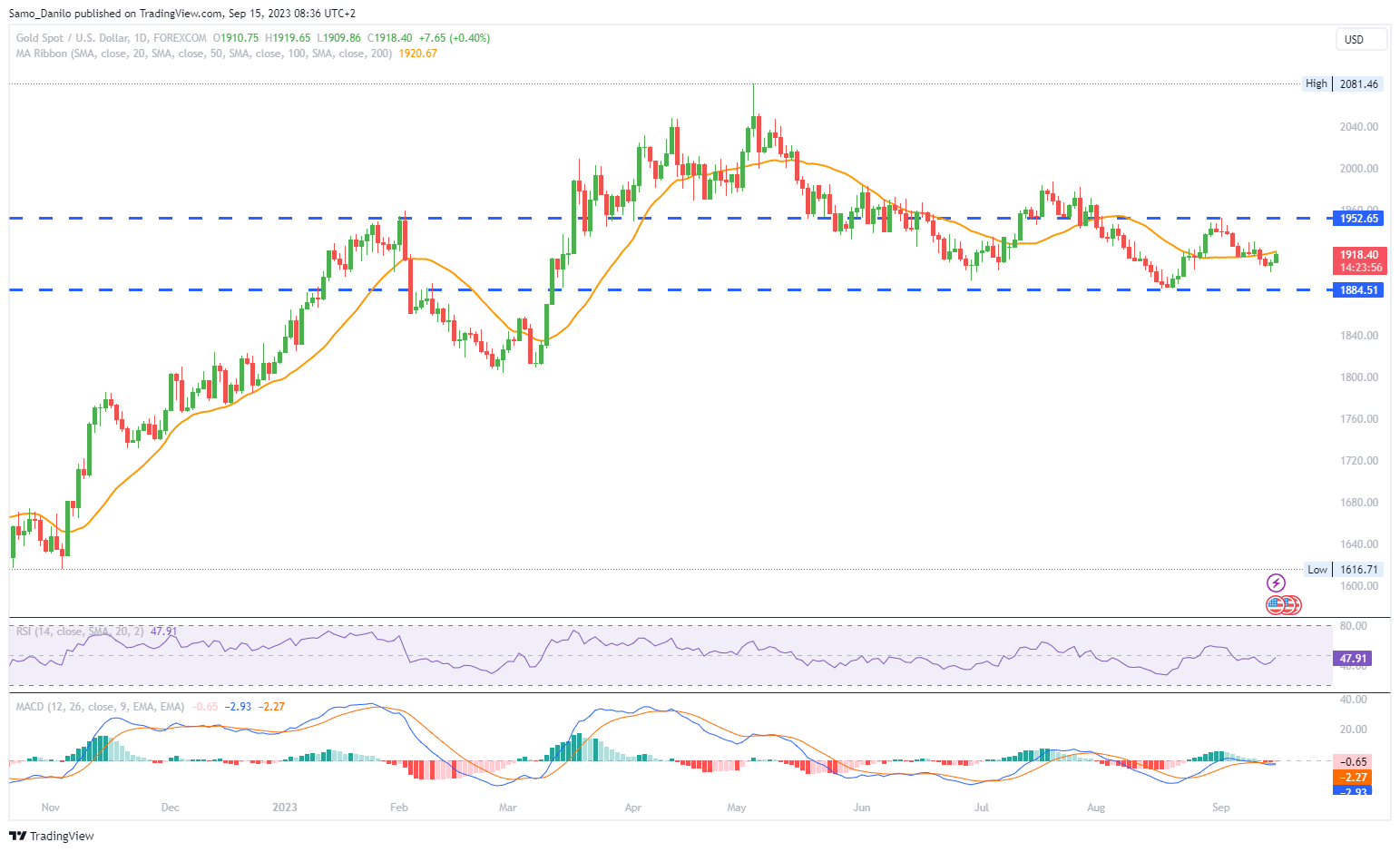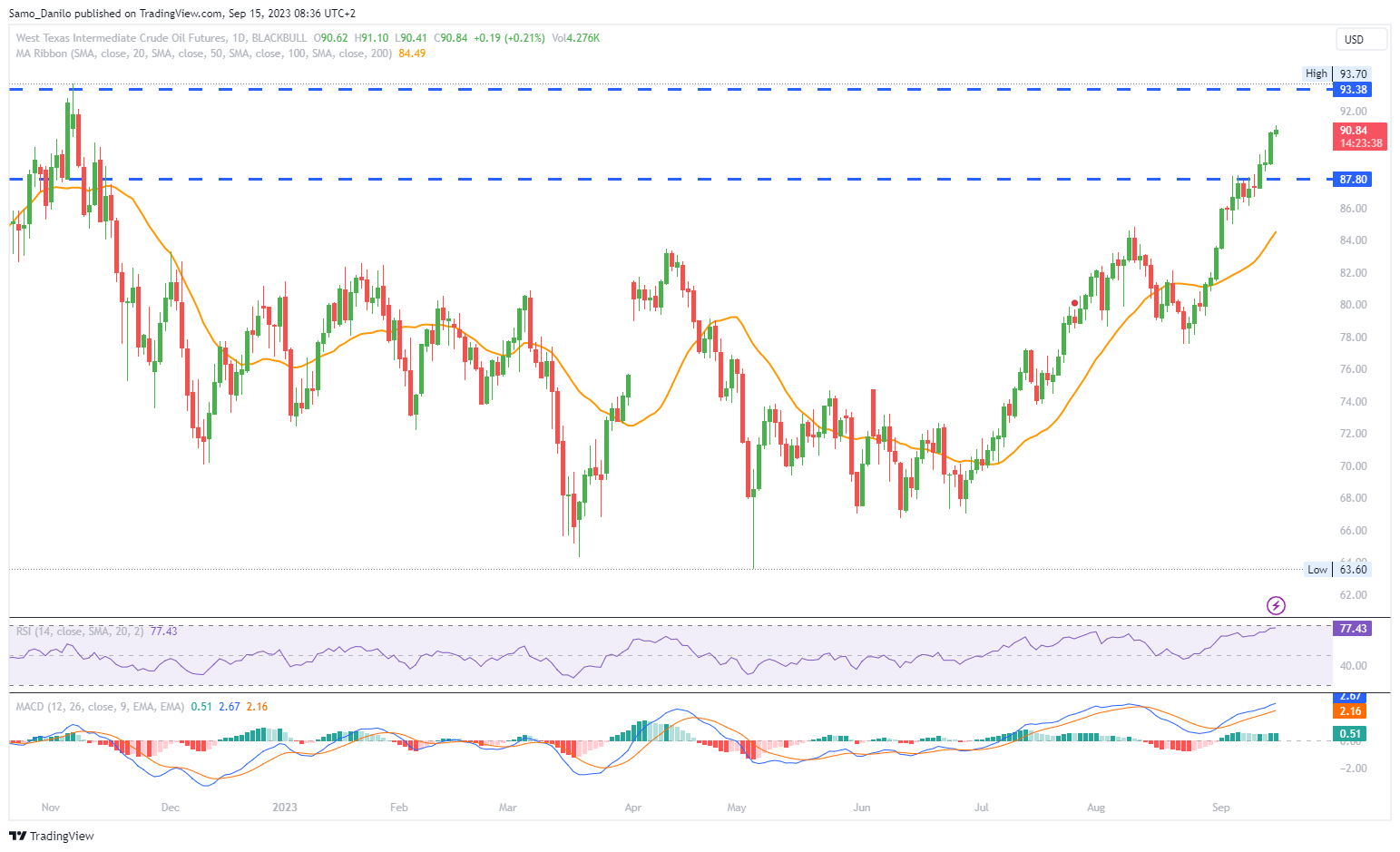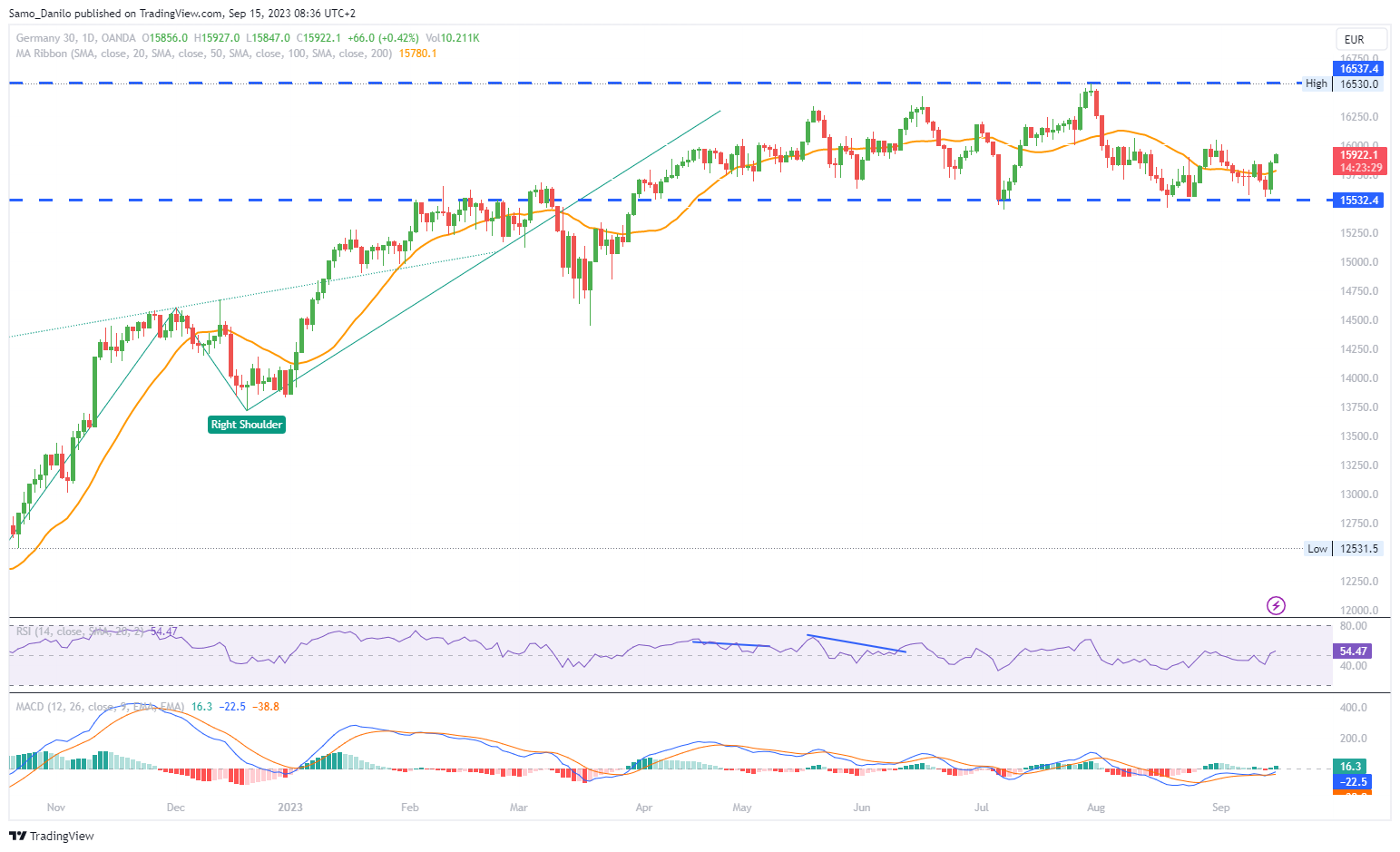EURUSD
- The European Central Bank (ECB) made a significant move by delivering a 25-basis point interest rate hike. This decision was somewhat unexpected, as some analysts and even some members of the Governing Council had anticipated a pause in rate hikes.
- Surprisingly, the interest rate hike did not have the expected effect of boosting the Euro. Instead, the Euro fell sharply. This decline was largely attributed to market expectations that this rate hike might be the last in the current cycle, indicating a more dovish stance from the ECB going forward.
- ECB President Christine Lagarde's communication after the rate decision also played a role. With the post-meeting press conference providing comprehensive insights, it left little additional information to be shared. Lagarde was scheduled to speak again at the Eurogroup meeting in Spain.
- During the American session, the US Dollar gained strength following the release of robust US economic data. The Producer Price Index (PPI) for August exceeded expectations with a larger-than-anticipated increase, and the retail sales report was upbeat. This strengthened the US Dollar.
- The EUR/USD pair broke through key support levels due to a combination of robust US data and the dovish tone of the ECB's rate hike. As a result, the pair remains vulnerable, and any deterioration in market sentiment could open the doors to further losses.
Closing statement: The EUR/USD experienced significant movements driven by the ECB's rate hike decision and market perceptions of its future stance. Additionally, strong US economic data contributed to US Dollar strength, further impacting the currency pair's dynamics.
GBPUSD
- The GBP/USD pair experienced an overnight bounce from the vicinity of the crucial 200-day Simple Moving Average (SMA). However, despite this bounce, the pair is trading within a narrow range.
- The British Pound (GBP) continues to underperform compared to the US Dollar (USD). This underperformance is primarily attributed to diminishing expectations for a more aggressive policy tightening stance by the Bank of England (BoE). This sentiment acts as a headwind for the GBP/USD pair.
- The Office for National Statistics reported that the UK's economy contracted by 0.5% in July, marking the quickest pace of contraction in seven months. This contraction has revived concerns about a potential recession in the UK. Additionally, there are signs that the UK labor market is cooling, further adding pressure on the BoE to consider a pause in its rate-hiking cycle.
- Despite these economic challenges, the markets are still pricing in a higher likelihood of a 25-basis point interest rate hike at the BoE meeting scheduled for September 21. Moreover, there is approximately a 30% chance of another rate hike in November. However, the first rate cut is not expected until the second half of 2024.
- On the other hand, US consumer inflation figures released on the same day highlighted that the Federal Reserve (Fed) is likely to maintain interest rates at their current level during the upcoming policy meeting.
| SMA (20) | Falling |
|
|
| RSI (14) | Neutral | ||
| MACD (12, 26, 9) | Slightly Falling |
|
Closing statement: The GBP/USD pair's dynamics are influenced by the contrasting economic situations and central bank policies of the UK and the US. Despite economic challenges in the UK, market expectations for rate hikes continue, while in the US, inflation data suggests a steadier monetary policy from the Fed. These factors are shaping the pair's movements.
GOLD
- Gold price has managed to rebound from the $1,900 level and is currently attempting to regain the crucial resistance zone at $1,920. This area represents a confluence of the bullish 21- and 200-Daily Moving Averages (DMA).
- The increase in gold price is partially attributed to improved market sentiment. This positive sentiment is driven by China's policy support measures and strong business activity data, which are reducing the demand for safe-haven assets like the US Dollar. As a result, the recent rally in the US Dollar has been limited.
- In the US, inflation remains well above the Federal Reserve's (Fed) stated 2% target. The recent surge in crude oil prices has heightened concerns about the inflation outlook, potentially prompting the Fed to keep interest rates at higher levels for a longer duration.
- Recent US economic data, including encouraging Retail Sales, Producer Price Index (PPI), and Jobless Claims figures, indicate continued economic resilience in the United States. This data has reinforced expectations that the US Federal Reserve (Fed) might implement another interest rate hike by the end of the year.
- The relatively subdued sentiment surrounding US Treasury bond yields is offering additional support to gold. These lower yields make non-yielding assets like gold more attractive by comparison.
| SMA (20) | Neutral | ||
| RSI (14) | Slightly Rising |
|
|
| MACD (12, 26, 9) | Neutral |
Closing statement: Gold's performance is influenced by several factors, including market sentiment, inflation concerns, US economic data, and movements in US Treasury bond yields. The bounce off the $1,900 level and the attempt to breach the $1,920 resistance zone reflect these dynamics in the gold market.
CRUDE OIL
- Crude oil prices are on track for a third consecutive weekly gain, driven by several factors that indicate robust demand.
- Better-than-expected economic data from China is a significant contributor to the upward momentum in crude oil prices. The People's Bank of China (PBOC) implemented measures to stimulate its economy, including lowering the Reserve Requirement Ratio (RRR) and the 14-day Reverse Repo rate. This coincided with strong Retail Sales and Industrial Production figures for August, suggesting that the world's second-largest crude consumer is experiencing a surge in demand.
- Wall Street has shown a strong inclination to bet on oil, with analysts expressing confidence in the decision made by OPEC+ (a coalition of oil-producing nations) at the end of the previous month. OPEC+ opted for output cuts, bolstering expectations that the oil market will remain tight in the fourth quarter of the year.
- Record-breaking refining rates in China align with output cuts by major oil producers like Russia and Saudi Arabia. These production cuts have raised concerns about the supply of crude oil. These supply-related worries have pushed both Brent and West Texas Intermediate (WTI) crude oil prices to their highest levels since November.
- The IEA has expressed the expectation that the extended oil output cuts by Saudi Arabia and Russia will result in a market deficit throughout the fourth quarter. This outlook supports the idea that the oil market will remain tight, with demand outstripping supply.
| SMA (20) | Rising |
|
| |
| RSI (14) | Rising |
|
|
|
| MACD (12, 26, 9) | Rising |
|
|
Closing statement: Crude oil prices are being driven by strong demand indicators, particularly from China, and supply concerns due to output cuts by major oil-producing nations. This combination of factors has led to a multi-week increase in crude oil prices, with optimism prevailing in the oil market.
DAX
- The DAX displayed a notable performance on Thursday, gaining 0.97% and reversing the previous day's 0.39% loss. The session concluded with the DAX at a level of 15,805.
- Investor sentiment is influenced by the surprise decision by the European Central Bank (ECB) to raise interest rates. This unexpected move has brought ECB President Christine Lagarde into the spotlight as her statements and remarks could further impact market dynamics.
- Several key economic data releases are anticipated, including Eurostat's release of Q2 Labor Costs and Trade Balance figures, as well as the German Wholesale Price Index. These releases will provide insights into various aspects of the European and German economies.
- Investors are expected to shift their focus from monetary policy to the broader global economic outlook. While Germany has been on course for a potential recession, positive indicators from China and robust economic data from the United States are likely to provide support for further short-term gains in the DAX.
- The futures market indicates a bullish outlook for the end of the week, with the DAX showing an increase of 73 points. Additionally, the NASDAQ is poised for gains, with a projected increase of 36 points.
| SMA (20) | Slightly Rising |
|
| RSI (14) | Slightly Rising |
|
| MACD (12, 26, 9) | Neutral |
Closing statement: The DAX's strong performance on Thursday, driven by the unexpected ECB rate hike, suggests an evolving market environment. As investors await key economic data releases and continue to assess the global economic landscape, the DAX futures market signals optimism for the near future.
